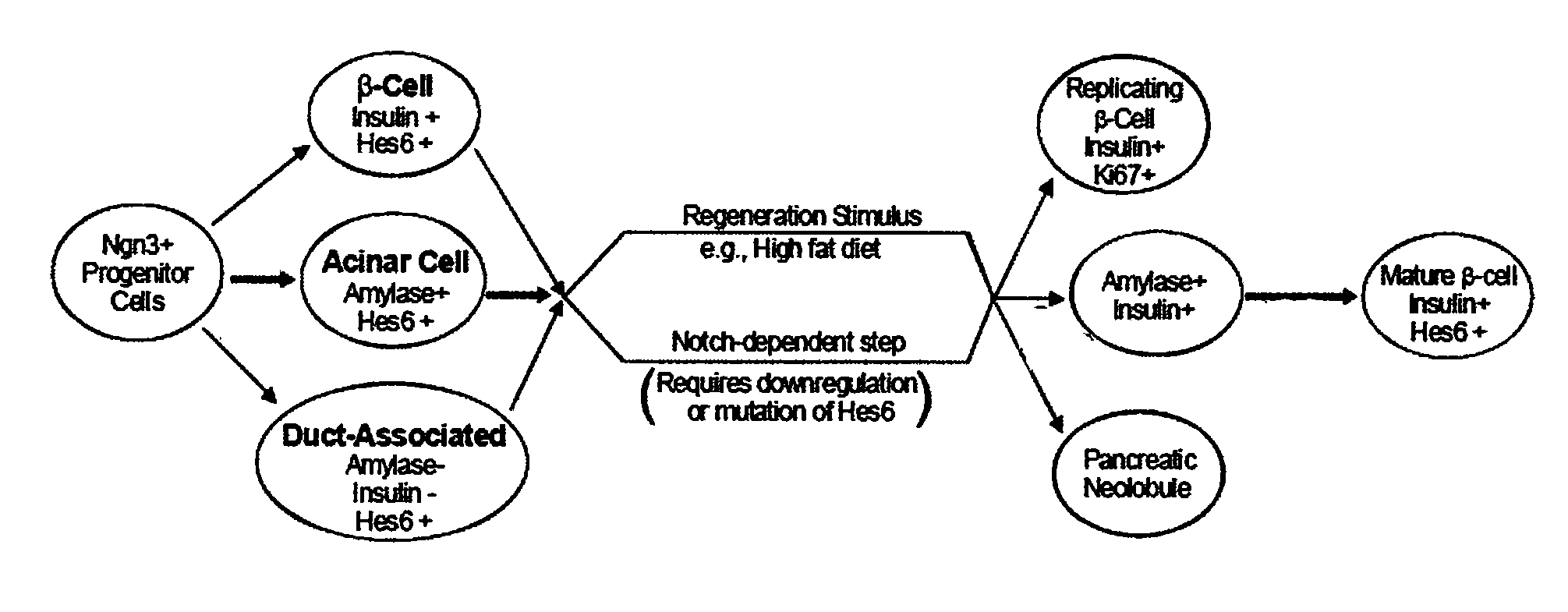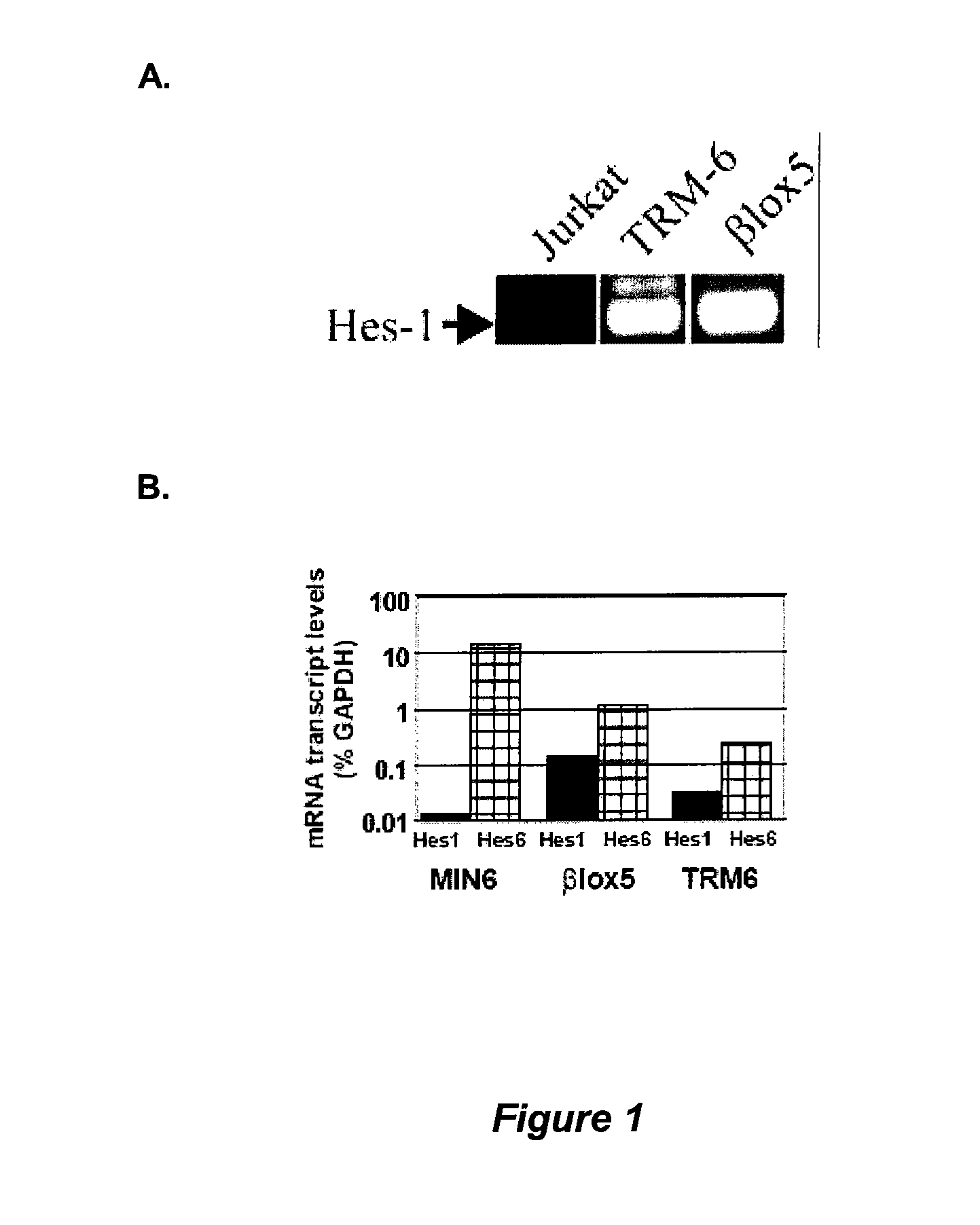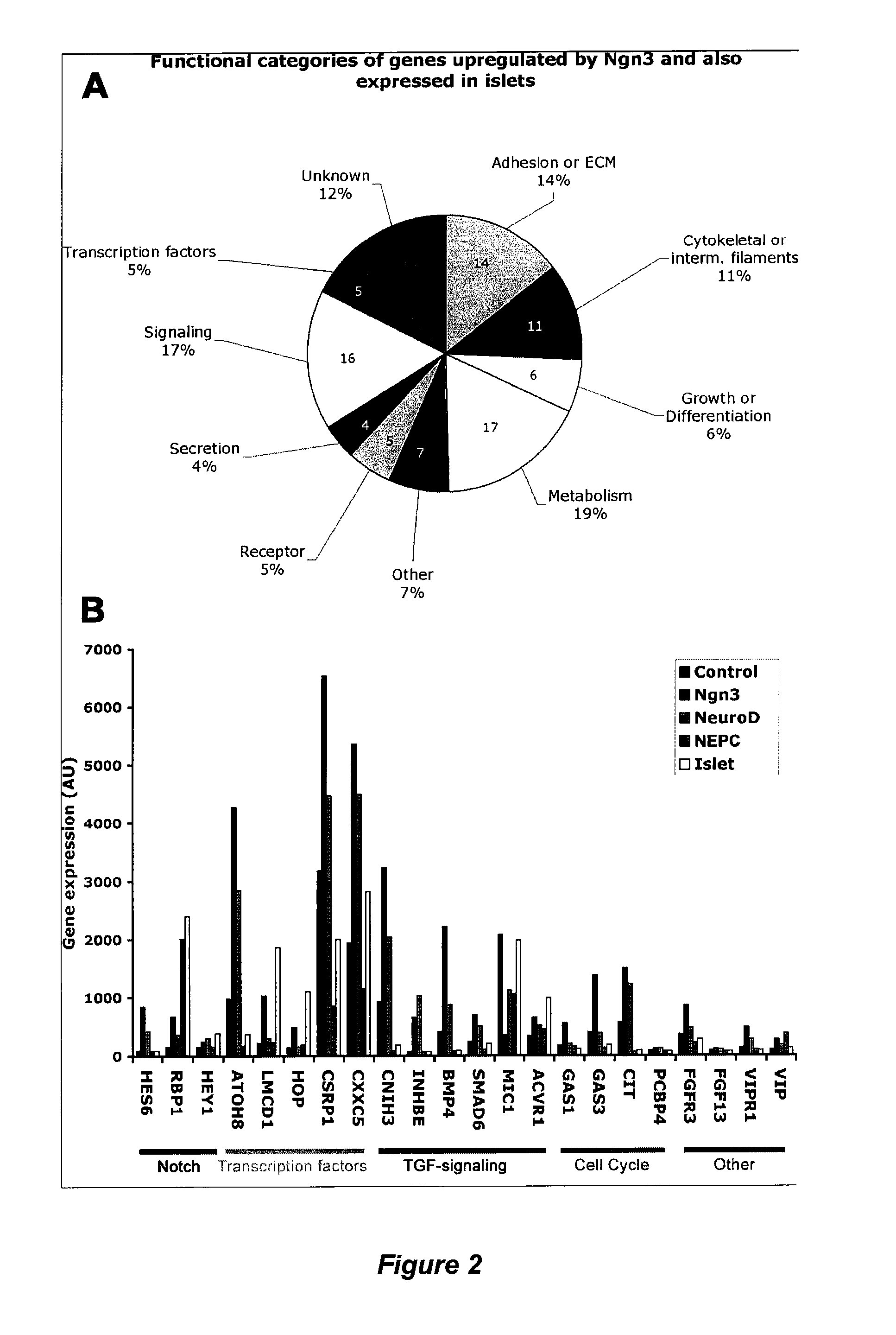Hes6 as a marker of pancreatic endocrine cells
a technology hes6 is applied in the field of hes6 as a marker of pancreatic endocrine cells, which can solve the problems of limited access and inadequate supply, and achieve the effect of promoting endocrine cell proliferation and modulating endocrine cell function
- Summary
- Abstract
- Description
- Claims
- Application Information
AI Technical Summary
Benefits of technology
Problems solved by technology
Method used
Image
Examples
example 1
Identification of Novel Down-Stream Targets of Ngn3
[0086]Two cell lines have been developed from the human endocrine pancreas, TRM-6 and βlox5, and characterized in detail. TRM-6 was derived from human fetal islets (P Itkin-Ansari et al., Mol Endocrinol, 14:814-22 (2000); S Wang et al., Transplant Proc, 29:2219 (1997)), while βlox5 was derived from FACS-purified human β-cells (D Dufayet de la Tour et al., Mol Endocrinol, 15:476-483 (2001)). These cell lines were developed using the growth stimulatory genes SV40 T antigen, H-rasval12, and hTERT (D Dufayet de la Tour et al., Mol Endocrinol, 15:476-483 (2001); P Itkin-Ansari et al., Mol Endocrinol, 14:814-22 (2000); S Wang et al. Cell Transplant, 6:59-67 (1997); T L Halvorsen et al., Mol Cell Biol, 19:1864-70 (1999)). Retroviral vector mediated expression of PDX-1 and aggregation of TRM-6 into cell clusters to promote cell-cell contact induced substantial levels of somatostatin expression and at the same time caused partial cell cycle ...
example 2
Notch Pathway Components, Including Hes6, as Downstream Targets of Ngn3
[0092]The expression of several genes related to Notch-signaling was affected by Ngn3; including RBP Jκ (RBP1), and HEY1. Of greatest relevance to this invention, Hes6 was one of the most highly upregulated genes in response to both Ngn3 and NeuroD (FIG. 2). Hes6 also acts downstream of another bHLH transcription factor, Math1 (D Qian et al., Dev Dyn, 235:1689-700 (2006)), indicating a broader role in regulating Notch-signaling downstream of differentiation-inducing bHLH proteins.
example 3
Identification of Hes6 in the Fetal and Adult Pancreas
[0093]We examined Hes6 expression in e14.5 pancreata from heterozygote Ngn3EGFP mice (a kind gift from Dr. K. Kaestner) to determine that it was present in at least some Ngn3-expressing endocrine precursor cells. To verify antibody specificity, Hes6 expression was investigated in adult mouse Papillae Circumvallatae (FIG. 5d), as Hes6 expression previously was demonstrated in this tissue by in situ hybridization (Y Seta et al., J Comp Neurol, 464:49-61 (2003)).
[0094]Consistent with the data in the cell line model, some Ngn3 (GFP) positive cells expressed Hes6, predominantly in cells also expressing insulin (FIG. 5A). Because Ngn3 is visualized with eGFP under the control of the Ngn3 promoter, this is most consistent with Hes6 being induced by Ngn3, which is then rapidly shut off, while the longer half-life eGFP persists, leading to cells co-expressing insulin, eGFP, and Hes6. Hes6 was also expressed in adult islets demonstrated by...
PUM
| Property | Measurement | Unit |
|---|---|---|
| time | aaaaa | aaaaa |
| time | aaaaa | aaaaa |
| molecular weight | aaaaa | aaaaa |
Abstract
Description
Claims
Application Information
 Login to View More
Login to View More - Generate Ideas
- Intellectual Property
- Life Sciences
- Materials
- Tech Scout
- Unparalleled Data Quality
- Higher Quality Content
- 60% Fewer Hallucinations
Browse by: Latest US Patents, China's latest patents, Technical Efficacy Thesaurus, Application Domain, Technology Topic, Popular Technical Reports.
© 2025 PatSnap. All rights reserved.Legal|Privacy policy|Modern Slavery Act Transparency Statement|Sitemap|About US| Contact US: help@patsnap.com



